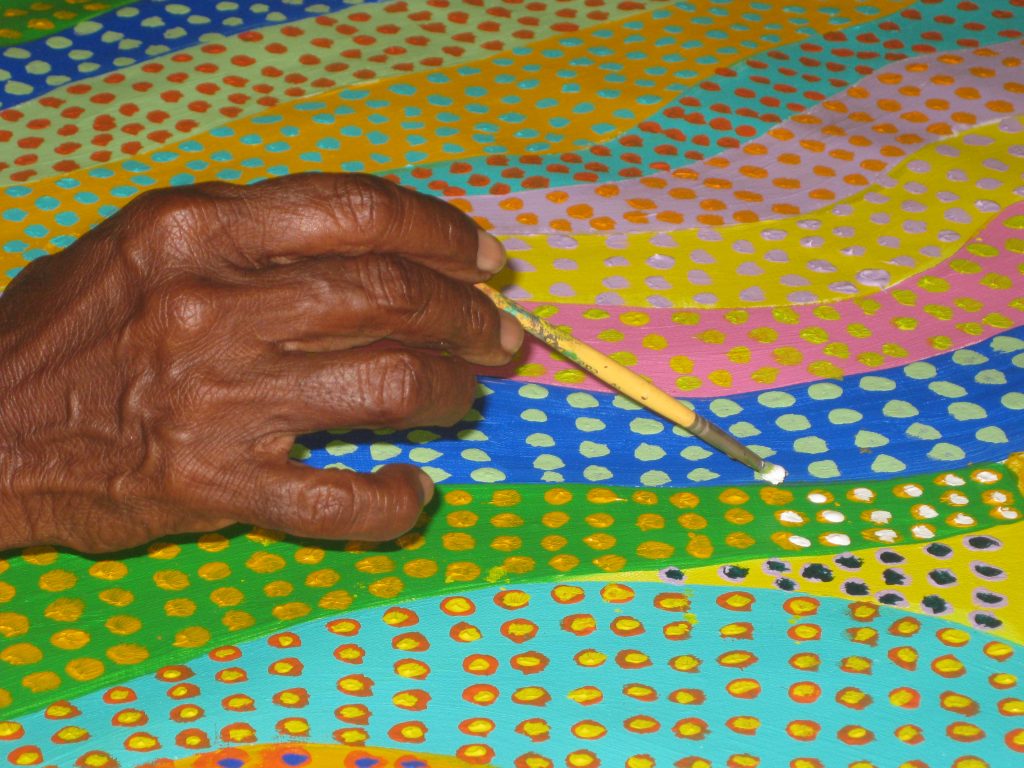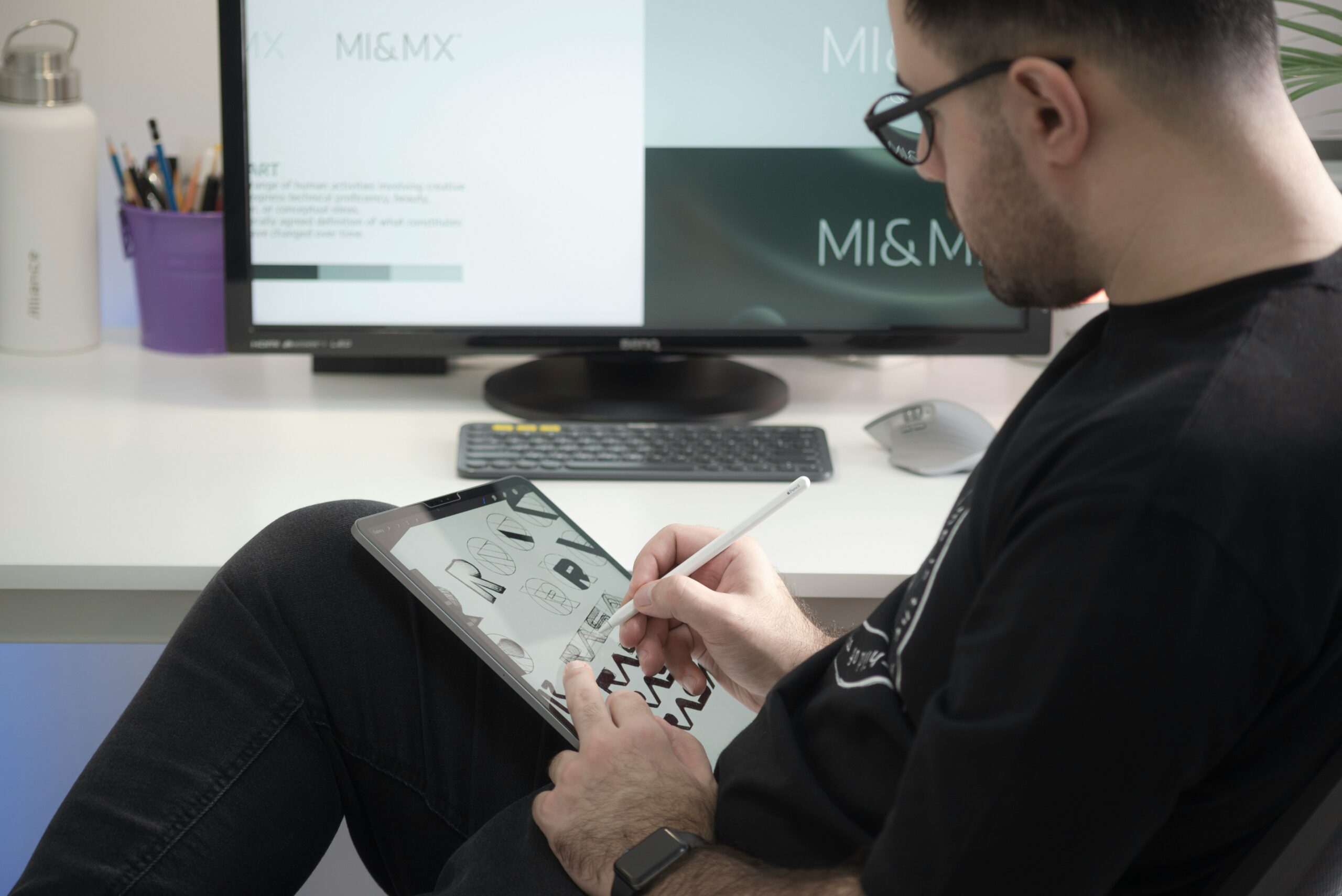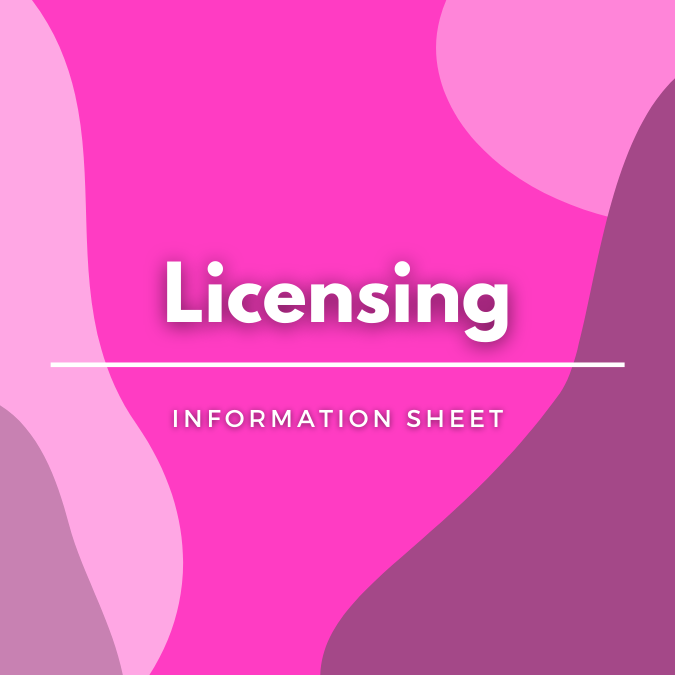Maari Ma Indigenous Art Awards 2020

Arts Law regularly reviews the terms and conditions of competitions and rates them out of five stars. Our review looks broadly at the terms and conditions of a competition. In particular, we look closely at how a competition deals with an entrant’s copyright and moral rights and consider this in light of the prize. Entrants should always take into account the possible profile-raising which may result from being a finalist or winner.
By accepting the terms and conditions of a competition, entrants should be aware that they may be entering a legally binding contract.
Review
This month, Arts Law has reviewed the terms and conditions of the Maari Ma Indigenous Art Awards 2020 in New South Wales.
This is a non-acquisitive art prize.
The deadline for this competition is 18 February 2020. Entries are open to artists of Aboriginal or Torres Strait Islander descent who are current residents in the Far West Region of New South Wales, including the towns and communities of Broken Hill, Tibooburra, Wilcannia, Menindee, Ivanhoe, Pooncarie, White Cliffs, Dareton, Wentworth, Silverton, Gol Gol, Buronga, Tilpa, Wanaaring and the Balranald Shire.
Read the terms and conditions of this competition here.
Arts Law has rated this competition 4 out of 5 stars.
Last year, Arts Law gave a 3 star rating for the Maari Ma Indigenous Art Awards 2019. Arts Law made suggestions to the competition organiser to make this competition’s terms and conditions more artist friendly for 2020, and we are delighted that it took on board some of our suggestions.
This is the 10th anniversary of this annual competition for Indigenous artists resident in Far West New South Wales. The entry form states that ‘[t]he aim of the prize is to provide an opportunity to showcase and celebrate art works and creativity in the Far West by Aboriginal and Torres Strait Islander artists.’
There are four award categories and five prizes:
- The Open Award category offers a first prize of $5,000 and a second prize of $2,000 for artworks on any theme and in any medium, including painting, drawing, sculpture, photography, film and installation works.
- There is an Emerging Artist Award offers a prize of $1,000 for artists who are within the first five years of their practice.
- The Young Artist Award category is open to artists up to 18 years of age and offers the prize of an art pack to the value of $1,000. Artists under 18 will automatically be eligible for the Young Artist Prize.
- Finally, there is the Nhuungku Prize for Excellence of $1,000 which is automatically open to all female entrants. It would be preferable if this could be made clearer as the indication that the prize is for women only appears in the Awards Categories section.
All entrants are eligible for the First and Second Prize Awards and the remaining three prizes are limited to their categories of entrants.
The artwork must be an original work of the entrant created since January 2019. Entrants must not have had any of their artworks in any state, national or international collections.
The awards are announced and the official opening of the associated exhibition at the Broken Hill Regional Art Gallery occurs on 28 February 2020.
As mentioned, it is a non-acquisitive art prize. Entries may be offered for sale in the exhibition between 28 February and 3 May 2019. Selection of works to be included in the exhibition is at the sole discretion of the Gallery though it is not clear if all the works must be available for the duration of the exhibition even if they’re not selected for exhibition. We recommend that if they aren’t selected for exhibition they can be collected by the artist.
Copyright
There are several prizes and an opportunity for exposure for Aboriginal and Torres Strait Islander artists in the Far West on offer. This is great.
So how do the terms deal with copyright?
Arts Law is pleased to see that the terms deal with copyright in a much more artist-friendly way than the 2019 terms. There is still some room for improvement to achieve a 5 out of 5 rating, but overall they deal with copyright pretty well.
The terms clearly state that copyright ownership of the artworks remains with the artist which is best practice.
There appear to be 2 copyright licences.
Firstly, all entrants (not just winners and finalists) grant permission to Broken Hill Regional Art Gallery, Maari Ma Aboriginal Health Corporation and West Darling Arts Inc., to “reproduce installation images for non-commercial purposes, including images for promotion and documentation”. The licence should be limited to promotion and documentation related to the prize, exhibition and/or competition organisers. As currently drafted, an artwork could be used for promotion and documentation of anything. Further, we prefer not to see licences from all entrants, but instead only from winners and finalists. We appreciate that non-winning entrants may find it appealing to have their work promoted, however the licence is still too open-ended as there is not enough clarity around how their works might be used for promotion and in what documentation.
Secondly, winners grant a licence for non-commercial reproduction to promote and advertise the following year’s prize. This is better, as it limits the purpose of promotion to the prize.
It seems that both licences last for one year from the close of the exhibition, i.e. until 3 May 2021. This is fair.
The terms don’t specify that these are non-exclusive licences. It would be better if this was spelt out – this will make it clear to the entrants that they are free to license to other parties.
Moral rights
Under the law, a creator has moral rights including the right to be credited for their work and for their work to be used in a way that doesn’t affect the author’s integrity (that is, no changes to the work which affects their reputation).
Last year the 2019 terms were silent on moral rights. It is wonderful that this year, the terms and conditions recognise the artists’ moral rights and thereby show a respectful treatment of these rights. The terms state that the artist will be credited whenever their work is used (and Arts Law notes with approval that the image used on the front of the Award entry form appears to be credited in the text of the form). They also state that there will be no changes made to the work without the artist’s consent.
What else?
The terms state that works ‘may be for sale’ during the exhibition and the specifications for display of the art works are set out in the terms.
The sale price must be calculated by the entrant to include a 33% commission on the sale (presumably paid to the Broken Hill Regional Art Gallery), which is fair. However, it would be good if the terms included some more details about how exhibition sales will work, particularly when and how artists will be paid if a sale is made. We suggest the terms should include that payment be made to the artist within 30 days of receipt of the full payment from the buyer.
Finally, the terms don’t clearly state that the Gallery accepts liability for loss or damage to works while they are in its custody, but this can be implied and the terms specify that it will “exercise all due care in exhibiting and handling entries”. The Gallery states that it accepts no liability for any loss or damage to works when they are in transit and the artist should make sure they’re insured when the artworks are in transit. This is reasonable. However, the Gallery should insure the artworks while they are in the Gallery’s possession and control.
The artist is submitting personal information to the competition organisers as part of the application. It is a condition of entry that the artist’s name may be used by the Broken Hill City Council in its business papers and on its website. While they specify that your contact details will not be made public, ideally the terms and conditions would indicate that no other personal details will be released.
To conclude
This competition offers good prizes and a profile-raising opportunity for artists.
We would have awarded a higher rating if the copyright licence was tighter to require the licence only from winners and finalists and limit the use of images to promotion and documentation related to the prize, exhibition, and/or competition organisers. Nonetheless, the improvement on last year’s terms and conditions is rewarding for Arts Law and we congratulate the competition organiser for this.
You can lodge a query with us here if you would like to obtain advice from Arts Law about this competition.
Further Information
For more information see our website and our free information sheet on competition conditions.
Artists are welcome to contact Arts Law for legal advice on the terms of a competition. We also invite competition organisers to contact Arts Law for best practice assistance to make their terms and conditions fairer for artists. Please email us at [email protected] to tell us about any competitions or prizes you think we should check.




